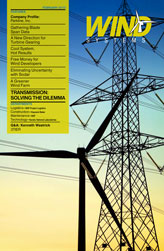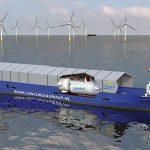For those responsible for the construction of wind farms, risks literally could be just around the corner. If your project logistics resources do not have extensive civil engineering experience, there could be serious consequences—from missed deadlines to cost over-runs. You want a resource that anticipates every curve in the road. The logistics provider’s civil engineering services should not be limited to transport issues. They must be in a position to provide a complete planning and fulfilment package: every step from port of import to the windmill foundation.
Not surprisingly, the devil is always in the details. You need resources that are proactive. Be sure to demand a tailor-made solution—combining project logistics and project engineering. That is why you must look for experience from your project logistics resources in all facets of civil engineering services: bridge inspection, surveying, site supervision, consulting, structural analysis, civil, and road design.
You want bridge and road and construction engineers who are infrastructure experts, not just machine engineers and transport engineers. Specialized engineers who have structural, geotechnical, and road design expertise, and preferably an engineering division that can handle the drafting, planning, approval, and execution of temporary and permanent traffic infrastructure measures for special transportation. This should include an experienced team of road and bridge planners with the corresponding technical equipment on hand. Specific services you should look for include:
• Ground investigations;
• Geotechnical reports, including subsurface assessments;
• Planning of ground improvement for site roads;
• Crane studies, including the geotechnical proofs of supports;
• Planning and geotechnical proofs for temporary construction of road systems;
• Drawings of transport configurations and the review of configuration-dependent turning radii for vehicles and loads;
• Complete and extensive route reviews;
• Surveying services at geometrically critical passages;
• Support in negotiations with authorities;
• Visualization and animation of operations.
Even though the distance between each wind turbine may be small, the location of each can provide different challenges. Surface surveys and geotechnical surveys can help to identify infrastructural and topographical problems. Your project logistics engineering provider should have a highly specialized network of resources around the world, as well as solid, reliable references. Due to advances in equipment, wind power production will become more effective, pushing boundaries and challenging producers and their resources.
Blades are now moving to places where greater amounts of wind are available. In such areas infrastructure is either very weak or almost nonexistent, often with high ascents and descents. In some countries there is no wind power transportation system, and blades and towers require special transportation. When equipment is not available in those locations, it has to be brought in from outside.
At complicated job-site areas geotechnical surveys will be needed, as well as additional infrastructure activities. Look for a combination of transportation competency and infrastructure competency in your project logistics provider. In some cases, wind power companies may not realize they are paying for services and equipment they do not need. Some project companies and suppliers tell their clients they must bring in “x” number of cranes or build additional roads. This unnecessarily increases the infrastructure costs. With the right planning you can adjust and/or level the descent and ascent from one windmill location to another, so that the crane can move without being disassembled.
Look for a provider that wants to provide a solution and has the right equipment in place with the right infrastructure services for the project. Be sure your project logistics provider measures everything that matters. You want a reliable resource that gives you control of your project—one that considers cost, time, and always meets your deadline.



































